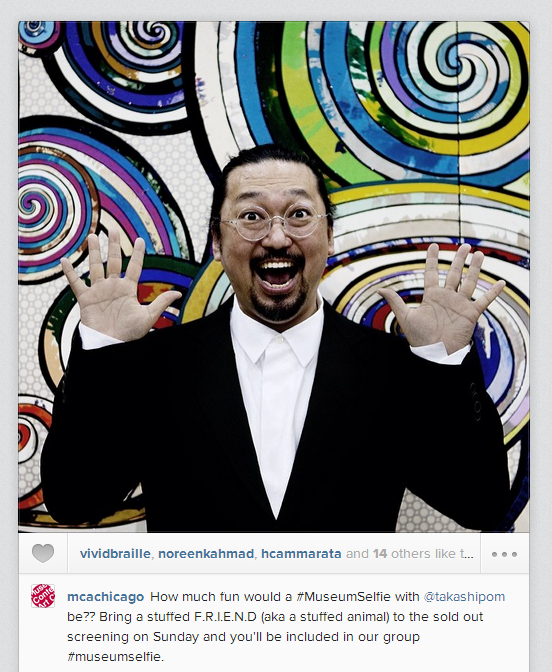
Few contemporary artists of serious merit have managed to elevate their appeal beyond the art world and into pop culture as convincingly as Takashi Murakami. This, of course, is a function of his design and style, which famously draws from otaku, anime, and manga—which is to say it blurs the lines between high and low. And the pop appeal makes sense: Murakami is a fellow traveler of a generation that includes Damien Hirst and Jeff Koons, among others who investigate the link between what we value as a mass culture and what is valued in monetary terms.
Love it or hate it, Murakami’s work first caught the attention of the Western art world during a 1994 PS1 fellowship in New York. Since then, his “superflat style”—the artist’s own coinage—has become iconic, a mirror of our time and, in a way, of life under the sway of money and capital.
Murakami’s investigations of money and capital led him to a vaunted 13-year partnership with luxury fashion brand Louis Vuitton. Although their relationship ended in 2015, it is already cited as a notable example of the early 21st-century union between fashion and art, one made explicit in works like 2003’s The World of Sphere, among Murakami’s most famous and expensive monogrammatic works. Another work in this mode, Eye Love SUPERFLAT (2003), will be available for bidding through artnet Auctions starting Thursday, February 2.
Today, the oft-called “Warhol of Japan” turns 55, a ripe age considering that his work lingers somewhere in the thematic territory between celebrating and lampooning a youthful innocence. Still, in the spirit of showing you a more mature Takashi Murakami, here are five things you probably didn’t know about the artist from his recent past.
1. He’s charitable.
In early 2015 Murakami joined Spanish soccer club FC Barcelona and the director of Reach Out To Asia campaign to launch a drive to improve the lives of marginalized children in Bangladesh, Indonesia, and Nepal.
2. He’s internationally based, and he cares about young artists.
In 2001, he founded Kaikai Kiki Co., Ltd., an art production and management company with offices in Japan and Brooklyn, New York, to help many young artists gain international exposure.
3. He’s also a filmmaker.
In 2013 Murakami debuted his first film. A hybrid between 1950’s monster movies and anime, Jellyfish Eyes is a story about friendship and childhood struggles with bullying, but it also incorporates more recent, real-world issues with its reference to Japan’s 2011 tsunami and nuclear disaster.
4. The events in Fukushima have influenced his recent work.
His first major retrospective in 14 years in Japan was on show last year at the Mori Art Museum in Tokyo. The show also focused on Japan’s elderly community, the fastest growing in the world, and how they actively contributed to the revitalization and restructuring of communities after Fukushima. “This is a self-portrait of Japan,” he told the Associated Press at the time.
5. The progenitor of all things “superflat” likes to eat 3-D burgers.
His own style may be superflat, but he loves his meals “thick.” During a 2015 interview with the Financial Times, Murakami scarfed down a burger, a bottle of San Pellegrino, a bag of potato wedges, and a bottle of Calpis, before chuckling, “this is thick-style.”